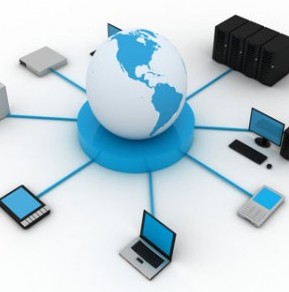Storing paper copies can be cumbersome and takes a lot of space. These days a successful business needs a good electronic archival system.
How to Make Moving From Hardcopies to Online Storage Easier

If possible, transition forms and reports into an email format and consider using email as the primary platform for sending and receiving forms and messages. For example, weekly or monthly reports could simply be sent through email, so the responder can simply answer as they get them. Email software, such as Outlook, offers a very user-friendly and convenient ways to organize and archive emails according to folder categories. Even better, if an employee quits, IT services can simply migrate the emails into a different account.
Digital Forms
Most employees are familiar with Excel and use spreadsheets to enter, monitor, and organize complex information and numerical data. Very few office workers actually print out spreadsheets and instead simply email them back and forth. Set the standard that documents like forms or reports should be simply filled out in Word, saved, and then emailed out. Filling out forms and reports in Word without printing is an excellent way to save time and money and makes it easy to organize and categorize folders on the network drive.
Scan
Almost all HR, legal, financial, and government documentation have set retention time periods. Consider scanning all incoming documents and saving copies online. Keep in mind that most government document regulations accept electronic file storage in place of hardcopies. You can also scan, save, and recycle any older documents that have not reached the required filing times. If possible, have your IT services department train employees on how to re-name to specific document names and files on the network drive.
Accounting
While many vendors and third-party companies still use paper invoices, more are turning to online or digital solutions. In fact, many companies prefer to email their invoices since it works very fast and acts as documentation of delivery and saves on postage. Consider emailing out invoices instead of using snail mail. Digital invoices also allow accounting to easily organize and archive their documents. You should also take advantage of online banking to reduce financial paperwork as well, and sign up for e-billing where possible.
All the ways of going digital from email, digital forms, scanning, and moving electronic invoices are all excellent ways to transition from a physical storage system to online storage system. Make the process gradual and move with the company and employees. If you do things all at once, make sure there are group trainings and demonstrations available so nothing gets lost or confused in the transition.
